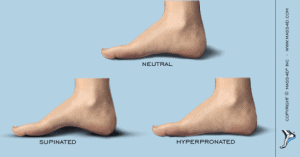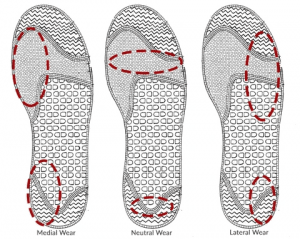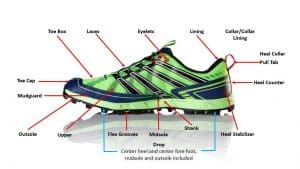4 Important Factors when selecting Footwear
Shoes are something we all wear and require, from sneakers to casual shoe wearers. This article explains several aspects to consider in your next shoe buying trip, such as size and comfort, when it comes to picking the correct footwear.
Shossee.com Celebrating International Women’s Day Big Sale Up to 60% Off
Why should I be concerned?
The first portions of your body to make touch with the earth are your feet. Whether you’re standing, walking, or sprinting, your feet absorb and create the force required to complete the tasks at hand. Higher up the chain, the feet can have a significant impact on knee mechanics, hip mechanics, and even the lower back. Finding the correct footwear, as well as the right workouts, is one piece of the jigsaw for anyone suffering from foot, knee, or hip pain.
Finding the Right Footwear: The ABCs
Your A.B.Cs is a useful acronym for remembering how to choose the appropriate shoes for you. Keep in mind that, while these concepts apply to all shoes, some activities, such as running, weightlifting, or sports requiring cleats, may have extra concerns that are outside the scope of this article. This article’s content is best suited for both casual and professional footwear.
A – Archetype
B — The diameter of the ball
C – Convenience
S – Size
Shoessee.com Daily & Street Wear UP to 50% Off ,Shop Now !
A– Archetype

This refers to whether your feet are supinated (high arch), pronated (flat arch), or neutral arch. A normally functioning foot should be in supination (arch) when it first touches the ground, progressively pronate (flatten) as more bodyweight is placed over the foot, and then supinate (arch again) when the foot lifts off the ground. This is the best way to improve your body’s ability to produce and receive force. When your foot is locked in one way vs. another during the whole walking cycle, you have a problem. A supinated foot might be excessively stiff, limiting your body’s capacity to receive stress, whereas a pronated foot can be too flexible.
Examining the tread marks on the bottom of your shoes is a simple and efficient technique to tell whether you are a pronator or supinator (see below). You are most likely an excessive pronator if you have increased wear and tear on the inside of your foot (medial wear). You are most likely an extreme supinator if you have increased wear and tear on the outside of your foot (lateral wear). Tread marks in the center indicate that you pronate and supinate effectively, which is the best of both worlds.

Shoessee.com Cyber Monday Super Sale 50% Off Sitewide, Shop Now ! Shoessee.com 2020 Black Friday The First Sale Starts $20 Off Orders $99 Code: BLF20

PRONATORS
For pronators (including me) – You’ll need a shoe with greater stability. A simple remedy is to tightly tie your laces together, which will help to stabilize the amount of mobility in the mid-foot. Second, look for a heel counter that is sturdy. The heel counter, also known as the heel stabilizer, is the blue wrap around the rear of the shoe in the figure above. External stability is provided by a robust heel counter, which aids in foot control. A sturdy heel counter should not have much give when you firmly grip the back of your shoe. When choosing sports shoes, be particularly cautious because athletic shoes have more give than others, which isn’t always a good thing.
Shoessee.com Brands Super Sale,Shop Now!
SUPINATORS
Supinators should use a shoe with greater padding to assist their legs to absorb forces more effectively. Look for shoes with a higher level of cushioning in the midsole. Another alternative is to purchase a sock liner or orthosis to compensate for the discrepancy.
Individuals with a neutral arch have more options when it comes to selecting the proper shoe to optimize their natural arch. Look for a shoe that has a good combination of a strong heel counter and appropriate padding. Remember that when we walk, both pronation and supination are normal; you simply don’t want too much of one over the other.
We recommend the shoes from SHOESSEE
B — The diameter of the ball

The front of your foot is measured from the inside to the outside of the ball. You don’t want a shoe that squishes one side of your foot more than the other. Look for shoes with large toe boxes if you know you have a wide toe box. If you know you have small feet, search for shoes that will fit them comfortably. Too little space can limit the amount of mobility in your toes, hurting muscles and joints higher up the body, while too much space can cause excessive motion in the foot, causing the same problem.
The Best Slippers and House Shoes, on Shoessee.com up to 50% Off
C – Convenience
There isn’t much to say about this one. Comfort should be considered while selecting a shoe. Because you will be on your feet for the majority of the day, a shoe should feel comfy to you. Simply be aware that wearing a new style of shoe that your body is unfamiliar with will take some time for your body to acclimatize.
Shoessee.com Women’s Comfortable Flat Boots,New-in shop now !
S – Size
The majority of the time, shoe size refers to the length of the shoe (see the image above). You should strive for no more than 12 inches of space in front of your longest toe when determining a suitable shoe size. Other unique features of your foot should be considered as well, even if they aren’t included. This covers things like different toe shapes, mid-foot height, and so on. Taking all of the information into account, you’ll be able to determine the proper shoe size for your foot.
Shossee.com Celebrating International Women’s Day Big Sale Up to 60% Off Best selling Women’s Fashion Boots | ShoesSee.com

